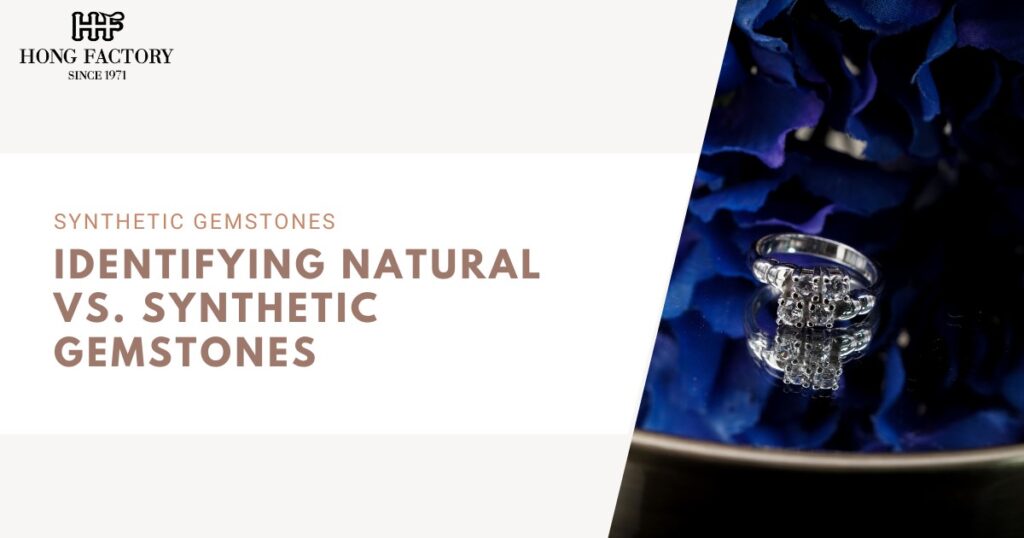
Identifying Natural vs. Synthetic Gemstones

Gemstones captivate collectors, jewelers, and consumers with their beauty and rarity. However, not all gemstones are created by nature—many are lab-grown or treated to mimic natural stones. Understanding the difference between natural and synthetic gemstones is crucial for making informed purchases and assessing value. This article explores the key characteristics, identification methods, and market implications of natural and synthetic gemstones.
1. What Are Natural and Synthetic Gemstones?
a. Natural Gemstones
Natural gemstones form deep within the Earth’s crust through geological processes that take millions of years. These stones are mined and may be cut and polished but remain unaltered in composition. Examples include:
- Diamonds
- Sapphires
- Rubies
- Emeralds
- Amethysts
b. Synthetic Gemstones
Synthetic gemstones are created in laboratories using controlled conditions that replicate the natural formation process. They share the same chemical, physical, and optical properties as their natural counterparts but are produced much faster. Common synthetic gemstones include:
- Lab-grown diamonds
- Synthetic sapphires
- Synthetic rubies
- Hydrothermal emeralds

2. Key Differences Between Natural and Synthetic Gemstones
| Feature | Natural Gemstones | Synthetic Gemstones |
| Formation Process | Naturally occurring in the Earth | Lab-created under controlled conditions |
| Inclusions | Often contain unique inclusions | Typically flawless or contain artificial inclusions |
| Growth Time | Millions of years | Weeks to months |
| Rarity | Rare and limited in supply | Can be mass-produced |
| Price | Higher due to scarcity | More affordable |
3. How to Identify Natural vs. Synthetic Gemstones
a. Visual Inspection
- Natural gemstones often exhibit inclusions, irregularities, and color variations.
- Synthetic stones tend to be flawless or have uniform color and clarity.
b. Magnification Test
Using a jeweler’s loupe (10x magnification), you can identify:
- Natural stones: Organic inclusions, crystal growth patterns, color zoning.
- Synthetic stones: Gas bubbles, unusual growth structures, lab-induced inclusions.
c. UV Light and Fluorescence
- Some natural gemstones fluoresce under ultraviolet (UV) light.
- Lab-created stones may exhibit different fluorescence patterns or stronger reactions.
d. Refractive Index (RI) and Specific Gravity Tests
- A refractometer measures the gemstone’s ability to bend light.
- Natural and synthetic gemstones have similar RIs, but subtle variations can indicate their origin.
e. Spectroscope Analysis
- A spectroscope reveals light absorption patterns unique to each gemstone.
- Synthetic stones sometimes show different absorption features compared to natural stones.
f. Advanced Lab Testing
For accurate identification, send gemstones to reputable gemological laboratories such as:
- Gemological Institute of America (GIA)
- American Gem Society (AGS)
- International Gemological Institute (IGI)
- Swiss Gemological Institute (SSEF)

4. Market Impact of Natural vs. Synthetic Gemstones
a. Pricing Differences
- Natural gemstones command higher prices due to their rarity.
- Synthetic stones are more affordable and widely available.
b. Consumer Preferences
- Some buyers prefer natural stones for investment and authenticity.
- Others choose synthetic stones for ethical and budget-friendly reasons.
c. Investment Value
- Natural gemstones retain or increase in value over time.
- Synthetic gemstones generally have lower resale value.
5. Ethical and Environmental Considerations
a. Ethical Concerns
- Natural gemstones may involve mining practices with environmental and ethical issues.
- Synthetic gemstones are conflict-free and created with minimal environmental impact.
b. Sustainability
- Lab-grown gemstones offer an eco-friendly alternative without depleting natural resources.
Understanding the differences between natural and synthetic gemstones is essential for buyers looking to invest in quality stones. While natural gemstones offer rarity and historical significance, synthetic gemstones provide an affordable and ethical alternative. By using gemological testing and seeking certification from reputable labs, consumers can make confident and informed purchasing decisions.

Keywords: natural gemstones, synthetic gemstones, gemstone identification, lab-grown diamonds, gemstone testing, real vs fake gemstones, buying gemstones


